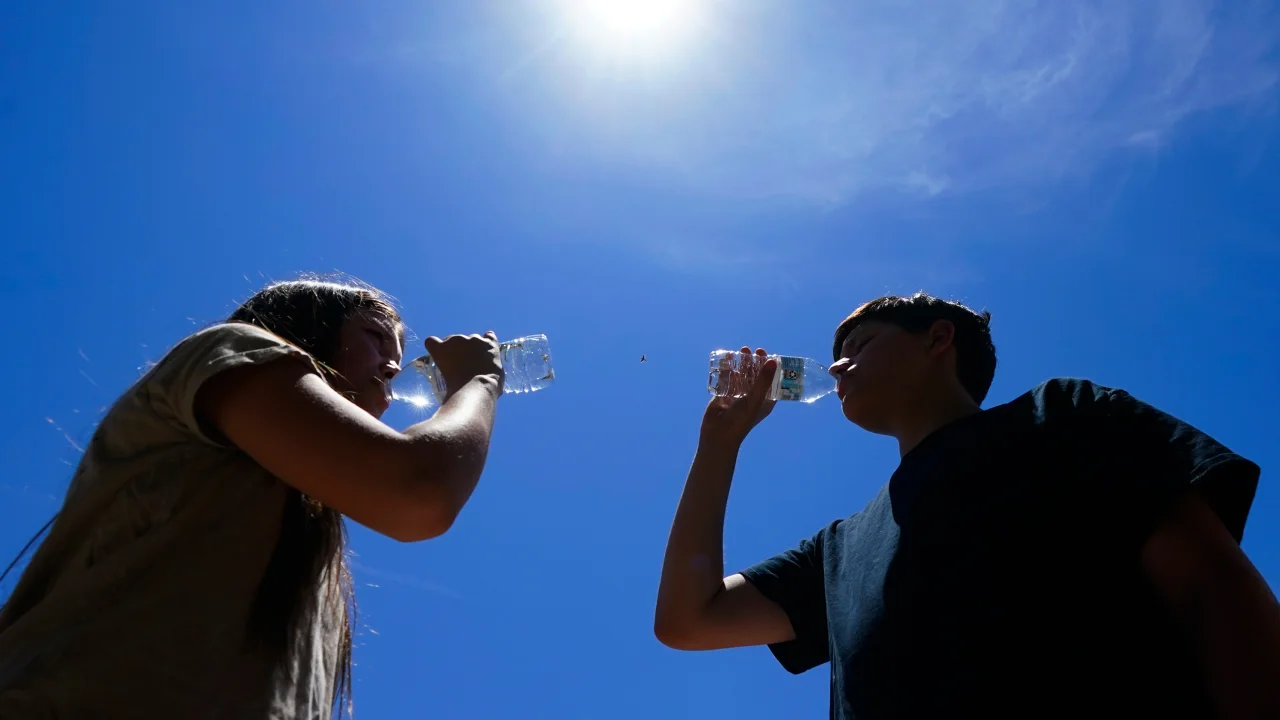In terms of annual mortality, the National Weather Service reports that heat waves kill more than twice as many people as hurricanes and tornadoes combined.
However, the Stafford Act, the federal legislation that authorises FEMA to respond to crises and defines what qualifies as one, does not include heat as one of the catastrophes eligible for aid.
Despite President Joe Biden’s trip out West this week to promote his climate programme and commemorate the Inflation Reduction Act, the Democrats’ landmark climate bill, temperatures in the Southwest are still regularly exceeding 100 degrees. Extreme heat has wilted the Southwest’s famed saguaro cacti and left people with third-degree burns after they slipped on the hot pavement. On Monday, Phoenix recorded its 44th straight day above 105 degrees.
Mayor Kate Gallego of Phoenix recently described the city’s excessive heat to Vice President Joe Biden as a “long-term emergency.” Some lawmakers in the West are trying to urge Congress to change the Stafford Act so that FEMA can help, but right now it’s not possible.
Ladd Keith, a professor at the University of Arizona and an expert on heat response, told AWN, “We essentially just don’t have the governance structures in place to deal with heat” in the same manner that we deal with wildfires and hurricanes. “Heat is literally the fingerprint of climate change, but it’s the last part of climate we’ve begun to address at the national, state, and local level.”
There are programmes to educate the public about the dangers of extreme heat, and there is disaster preparedness funds that can be used to help reduce the effects of heat. Deanne Criswell, administrator of the Federal Emergency Management Agency, recently told the Washington Post that FEMA should help cities pay for things like new cooling centres and making sure the power stays on during heat waves.
Despite the lack of current provisions in the Stafford Act, Criswell emphasised that the government was not waiting around doing nothing.
No matter how long a heatwave lasts, the agency’s entire power and resources that are put into motion when presidents proclaim disasters do not apply.
Natural Resources Defence Council senior climate and health campaigner Juanita Constible told AWN, “Right now, FEMA does not treat extreme heat in the same way as it does other disasters because it can’t.”
On Tuesday, Gallego told AWN that if heat was included in the Stafford Act, Phoenix and other municipalities could access far more federal money to help cool people and maintain the electric infrastructure during periods of high heat that refuse to abate. She gave the example of the government being able to bring in more mobile cooling units if this were to happen.
“We only have so many of them, and if the federal government had a critical mass of those units, they could bring them wherever they are and really help communities,” Gallego added. Climate change is a fact that affects the entire country. Hundreds of lives have been lost during heatwaves in communities from Chicago to the Pacific Northwest.
Bipartisan legislation is now being considered to amend the Stafford Act to include excessive heat, and it is being sponsored by Democratic Representative Ruben Gallego of Arizona. However, the bill hasn’t made any progress in Congress.
On Monday night, during the president’s stop in Arizona, Representative Gallego claimed he had spoken with Vice President Biden “about the need for FEMA to declare extreme heat a disaster.”
Keith said that heat is a “largely invisible threat,” but that include it in the Stafford Act by Congress might greatly benefit state and federal efforts to counteract its impacts. In the event of a power outage during a heatwave, for instance, government officials would be better able to step in and offer cooling, as mentioned by Keith.
“Adding it to that official list from Congress would clarify FEMA’s role in addressing heat,” Keith explained.
Although FEMA has access to a lot of federal funding, Constible told AWN that it’s possible they aren’t the best agency to respond to heat waves. First of all, heat is a “creeping disaster” because, unlike a hurricane or tornado, it stays put once it gets there. And heat is far harder on people than it is on buildings.
“Disasters tend to be defined in terms of property damage,” stated Constible. When catastrophic losses occur, a disaster is proclaimed. But heat is perhaps more dangerous.
According to county records, there have been 39 documented heat-related deaths in Maricopa County (where Phoenix is located) so far this year, and over 300 more are under investigation.
“We don’t have a good way of even capturing how many people are sick in a particular heatwave,” Constible added. I think it’s safe to say that the entire United States is caught off guard by the high temperatures this summer.
The Biden administration has proposed various federal efforts to cope with the heat in an effort to fill this deficit. During a recent event at which he heard from the mayors of Phoenix and San Antonio, Vice President Joe Biden revealed that he would be requesting additional funding for the National Weather Service and an increase in Department of Labour enforcement measures to protect workers from high heat on the job.
Keith remarked, “This is the most heat focused administration in our country’s history,” noting that before recently, heat was not typically included in lists of major climate concerns. That being said, we still have a long way to go. It’s a crisis, and we need to set up those governing institutions right away.









